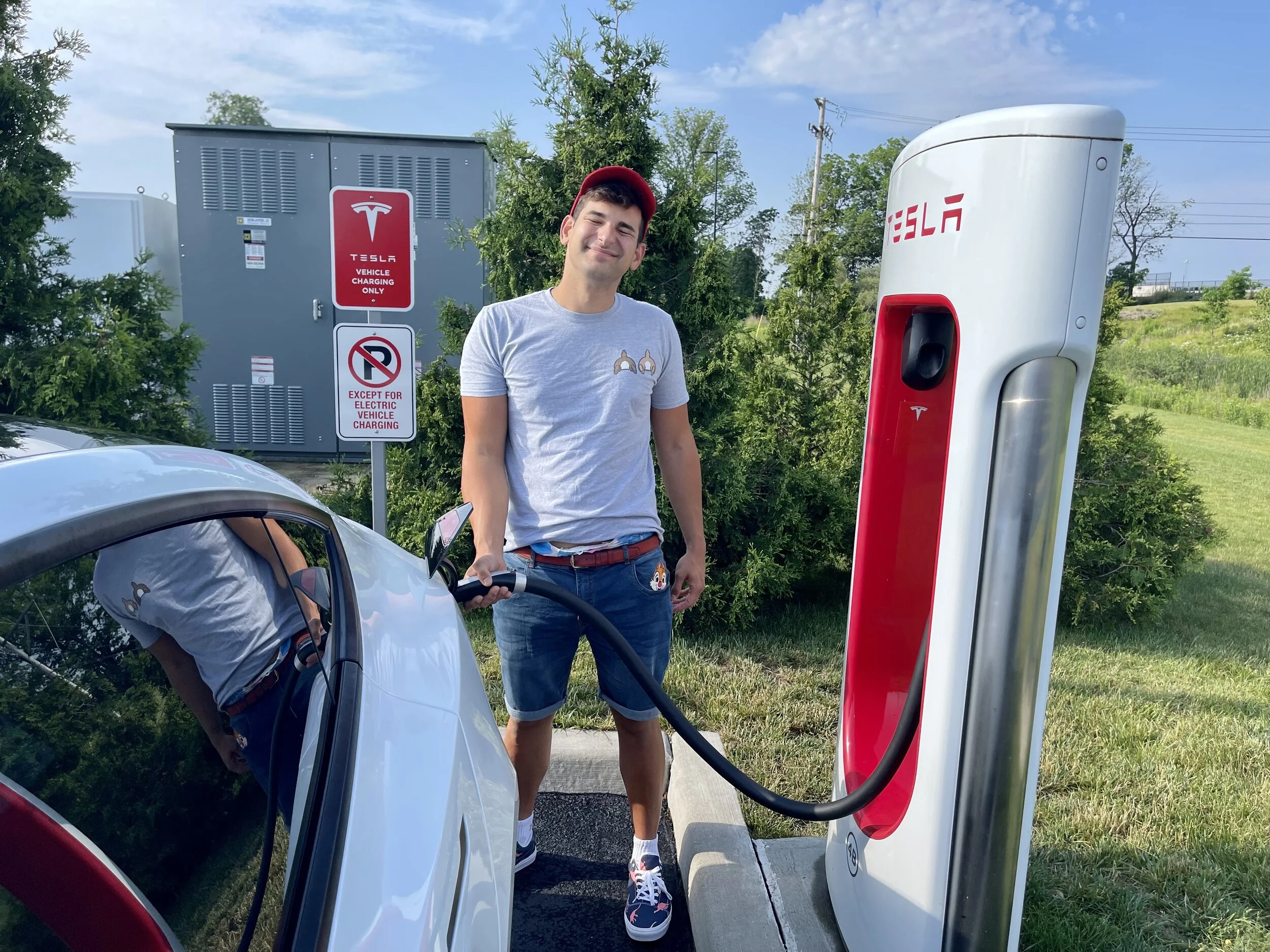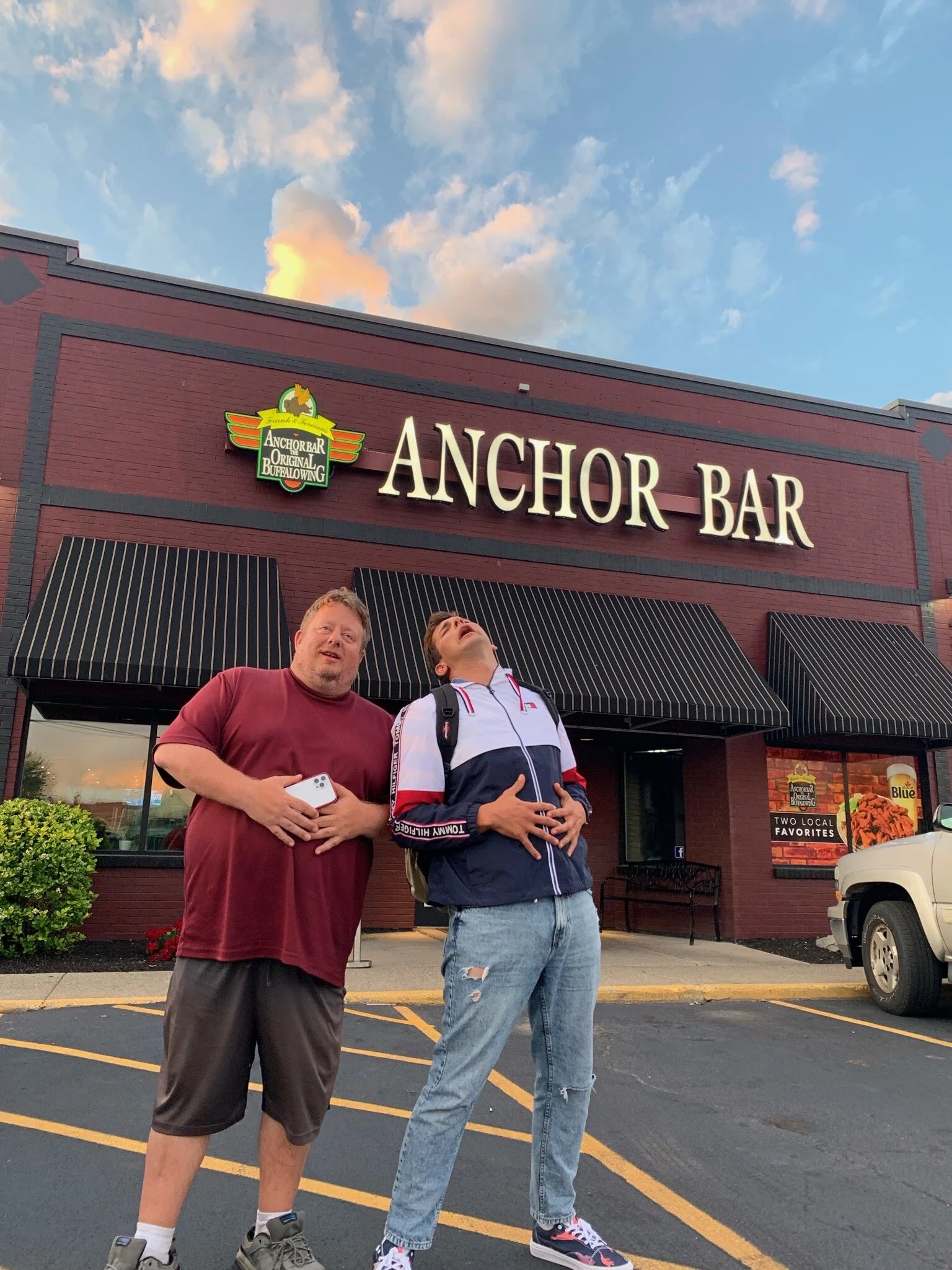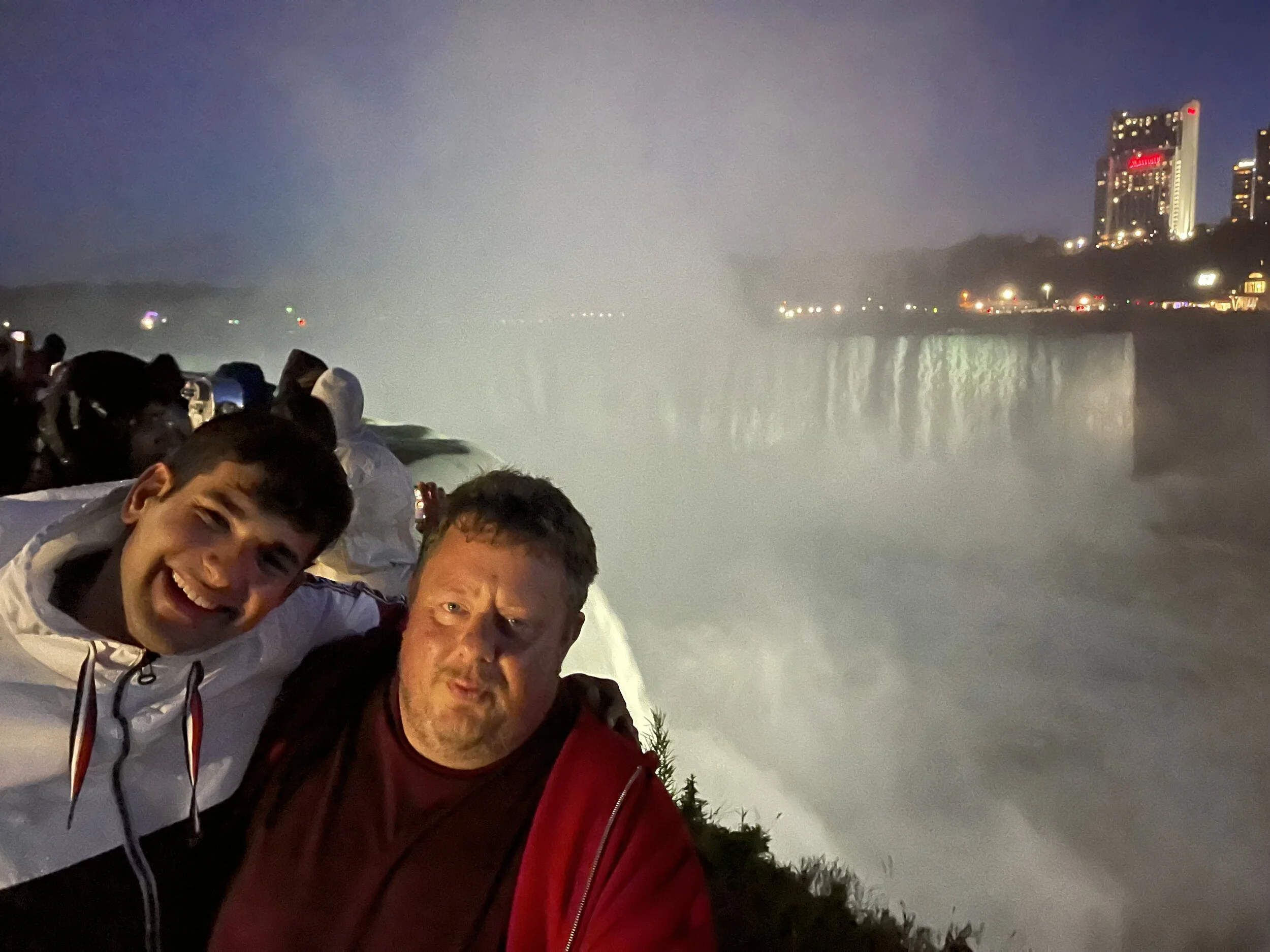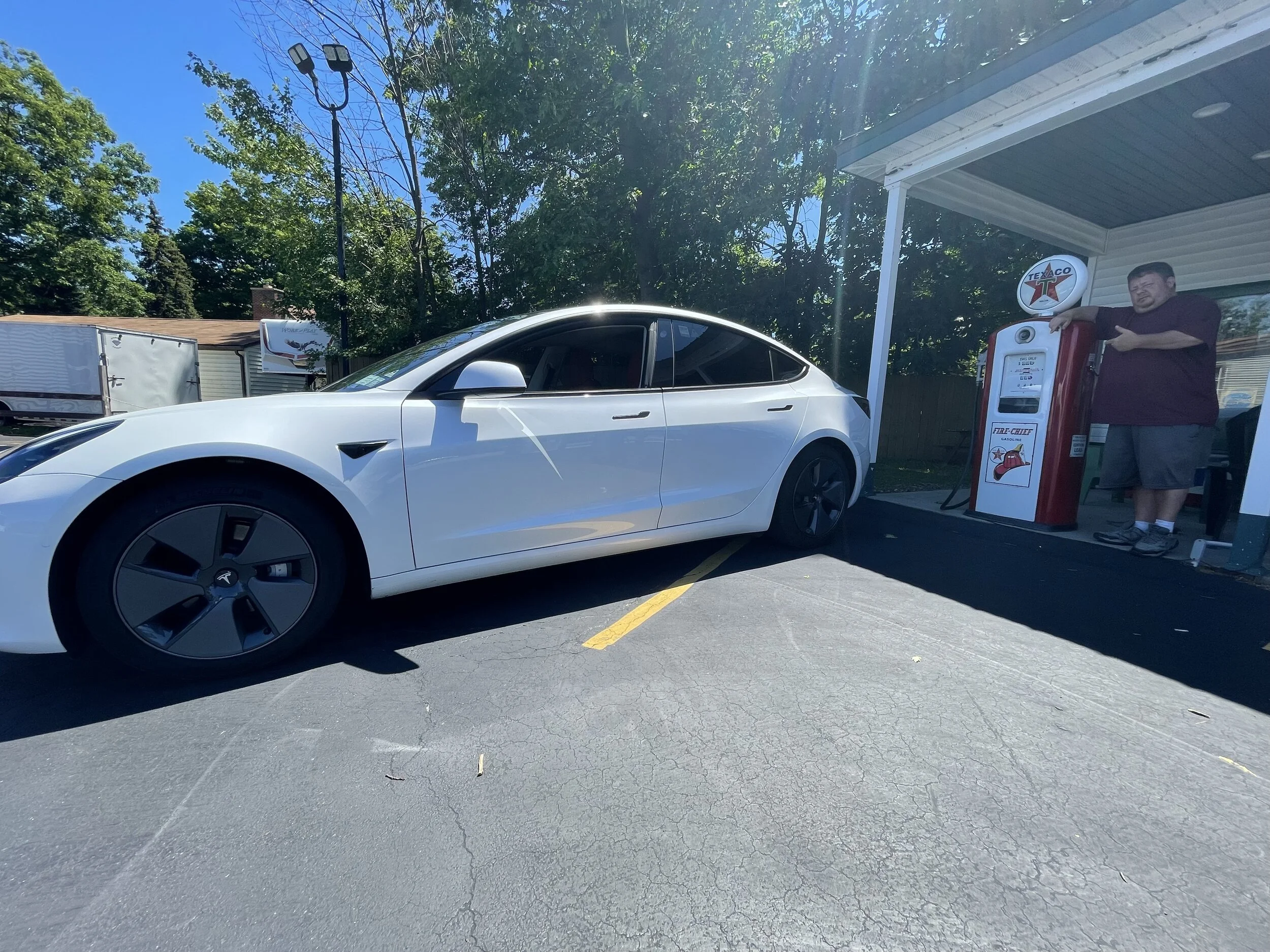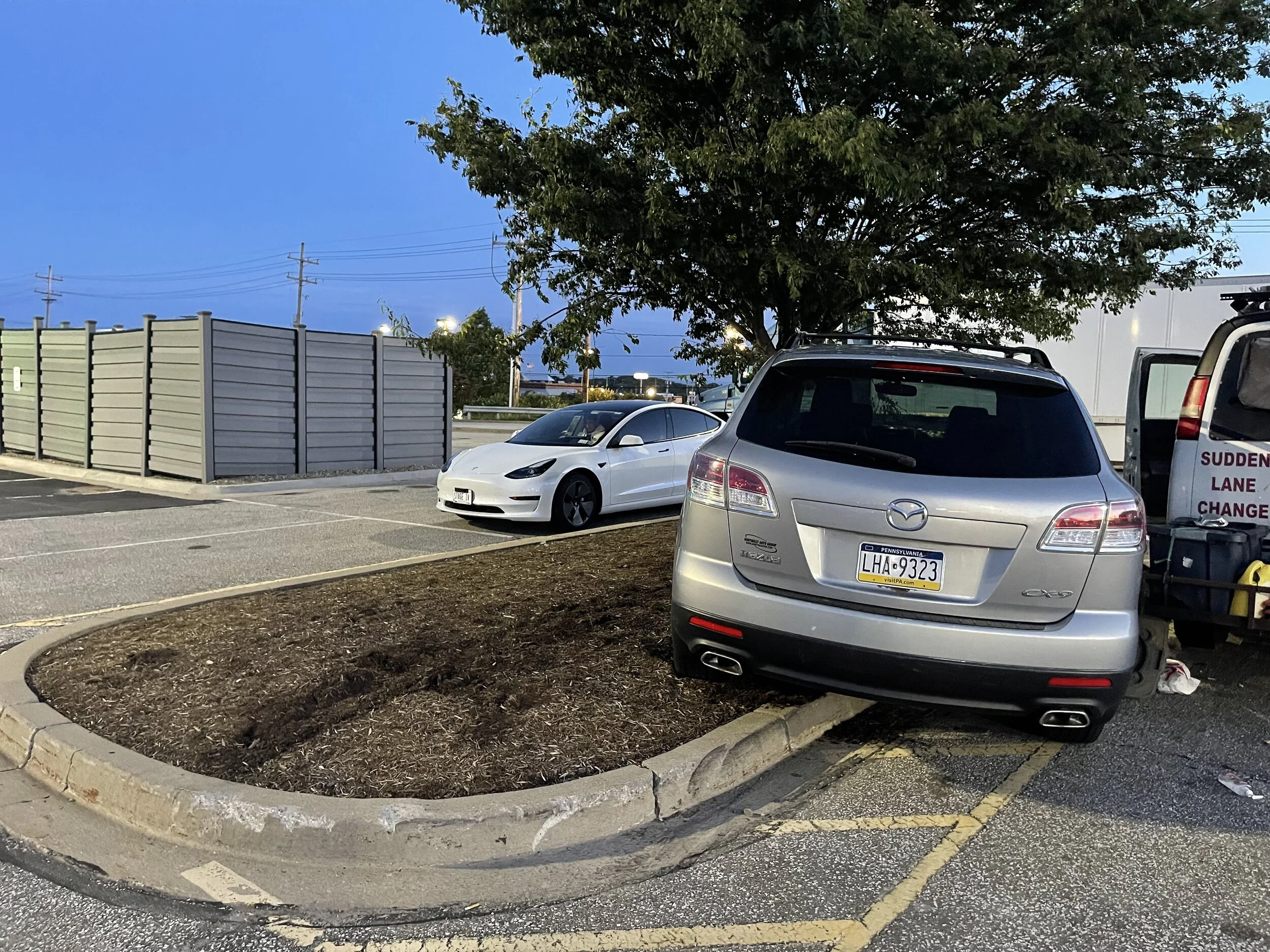
Bucket List Trip
The United States is filled with things I’ve always wanted to see. Why not see it in a Tesla?
The ‘Stage IV Tour’
In the first four months of 2022 I spent 26 nights sleeping in my Tesla Model 3, enjoying overnights at 19 different campgrounds during two road trips covering nine states up and down the east coast.
I stayed in campgrounds run by the US Army Corps of Engineers, the National Park Service, and the USDA Forest Service.
I enjoyed overnight in several state park systems: Georgia, Pennsylvania, South Carolina, and Virginia.
I camped in local parks, as well: one city park (Jacksonville, FL), and two county parks (Orange County Parks & Recreation system in Orlando and the Pinellas County Parks & Preserves in St. Pete).
I visited privately-owned campgrounds, too, including Boyd’s Key West Campground - billed as the southern-most campground in the USA; the Campground at Fontana Village; and Devil’s Backbone Camp.
I even stayed at a KOA.
Armed with a National Parks Access Pass - featuring half-price camping at most national parks - and apps like Campendium and RVLife, I set out to plan trips that would allow me to travel cheaply and cleanly, seeing the sights and spending as little as possible for an epic road trip.
I was prepared for pushback - campground operators likening TeslaCamping to traditional car camping with CO2 concerns or, in some cases, just snobbishness.
I definitely found some.
For the most part, however, I found genuine interest and - abeit begrudging, at times - acceptance.
Only one campground asked if I’d be “car camping.”
“You have a tent, don’t you?” the gentleman at the Welcome Center at Jacksonville’s Huguenot Memorial Park Campground asked me, sounding gravely concerned. I reluctantly admitted that I carried one in the trunk and he looked visibly relieved. “Oh, thank goodness!”
I wasn’t sure what would have happened had I said that I did not, and I didn’t want to find out, so I painstakingly set it up on the beach, then slept in my Model 3 anyway. When I awoke to a soaking wet tent from an unexpected overnight frost - temps were well below the seasonal average during that trip - I vowed to be more forceful going forward about not believing that it should be required.
(For my second road trip, through the Blue Ridge Mountains, I even left my tent at home).
I much prefer to sleep within the confines of my Tesla Model 3 over traditional ‘tent camping’. The car has a comfortable mattress that folds and stows away at a moment’s notice…. climate control that keeps the vehicle interior at a comfortable temperature throughout the night - whether it’s in the 80s in Florida or the 20s in the mountains of Virginia. (I’ve camped in both). It has a ‘camp mode’ feature that keeps the car running throughout the night and powers my CPAP, iPhone charger, and any other electronics I decide are necessary for the trip.
Best of all, I think, is the Model 3’s all-glass roof. That view - whether sleeping under falling stars in a field, or waking up to see majestic trees in a forest - that view makes this vehicle my own little climate-controlled sleeping pod on wheels.
And despite having the cubic square footage of a normal car, that see-through ceiling might even give the illusion that one is sleeping in the great outdoors.
I absolutely love it.
THE GETTING THERE…
I’ll admit that the getting there can be a bit of a challenge.
I previously drove a 2021 Tesla Model 3 SR+. (The ‘SR’ stands for ‘standard range’).
It was the base model, with the lowest range of any Tesla sold that year. EPA-rated for 265 miles, but I suspected that test was performed in downtown Manhattan during rush hour on a busy holiday weekend - lots of stop, very little go. In real-world conditions it got much less range - and cold temperatures chopped mile after mile off of that.
I drove up Skyline Drive (incline) on a chilly day (heat) in the rain (windshield wipers, headlights) and found that for every mile the mile markers told me I drove, my car told me I’d used up 1.75 miles of range.
So planning a trip that will offer realistic charging options was important if I hoped to enjoy myself on the road.
Because I like to try to drive as many miles for as little money as possible - one of my side-goals of the trip, really - the planning was even more important for me.
Whenever I could, I stayed in a campground that featured 50-amp electrical service. This allowed me to plug the EV in overnight and attain a full charge in just a few hours. I used an adapter I purchased from Tesla for around fifty bucks, and my ‘travel charger’ - mine came with the car. To use one of Tesla’s Superchargers would add between $12 - 16, to my expenses on average, nightly; charging at the campgrounds I stayed at night after night allowed that savings from the free charging capability to be put right back into my budget.
Some campgrounds offer 30-amp service, instead. That can be unreliable, and won’t always charge the car, but just in case I bought a ‘TT-30 adapter’ for around $90 from a third-party adapter store. (A traditional, and cheaper, 30-amp RV adapter won’t work).
Where the electric was unreliable or being used by campers at a neighboring site - I’m looking at you, Jekkyl Island! - I simply pulled up Tesla’s charging map on the touchscreen navigator and looked for my closest Supercharger or, if I have some extra time and am hoping for free charging, a Tesla destination charger - those have been added at more and more places across the country in the years since I got my first Tesla.
And on nights when all of the local campgrounds were full - or closed because “nobody camps here this time of year” - I could sometimes even find a hotel that, while not as economical as a campground, may have offered free charging, subsidizing the cost of that, too.
BUCKET LIST ROAD TRIP
My road trips are a ‘bucket list’ trip of sorts.
In June of 2020 I was diagnosed with stage IV neuroendocrine cancer. I had surgery in August of that year, during which is was determined that the cancer had originated in my mesentery and spread to my small intestines, liver, and lymph nodes. Partial small bowel resection surgery was successful, but the tumor wrapped around my mesenteric artery was determined to be inoperable. The cancer, I was told, could not be stopped.
Lucky for me, neuroendocrine cancer is a ‘slow-moving’ cancer with a better-than-usual prognosis. There is no “beating it” for most, unless it’s discovered very early, which mine wasn’t. (My surgeon estimated I may have had it for a decade or more).
The bad news is that, in addition to metastasis of the cancer itself, NETs comes with additional complications, including carcinoid syndrome and the possibility of carcinoid heart disease.
For now, I take an injection of a drug called Sandostatin every 28 days. I meet with my oncologist monthly, and scans are ordered every three to four months. So far the drug appears to be stopping the tumors from growing or spreading - woo hoo! But the symptoms of the disease have worsened over time, leading to days-long bouts with diarrhea and something I think might be likened to chronic fatigue.
I’ve named my road trip the Stage IV Tour for a dual reason.
In addition to the ‘bucket list’ facets of this trip, any across-the-country road trip done right will take longer than 28 days - and that’s all I have before my next injection is needed.
These injections are administered at the cancer center’s infusion center, and their effectiveness wears off soon after the four-week timeframe, meaning I have to be back in Rochester, New York once a month without exception.
My road trip, then, would be interrupted, repeatedly, by a need for this shot, and oncology team consultations, and CT or MRI scans, and the like.
Enter the ‘Stage IV’ Tour.
The first stage was completed in January 2022: a trip from my home in upstate New York to the southernmost point of the US, Key West, that I called Operation Snowbird. I spent the night on the beach at the Cape Hatteras National Seashore, spent two nights in my favorite city in all of the USA, Charleston SC, and spend a week in my former home state, Florida. I enjoyed driving on the Outer Banks Scenic Byway (North Carolina), the Overseas Highway (Florida), and the Edisto Scenic Byway (South Carolina).
The second stage, Head West, Young Man!, will take me from the Florida panhandle to Las Vegas, NV. This one’s still in the planning stages, but I hope to enjoy overnights in Baton Rouge and New Orleans, see a few cities in Texas, and check out some of the national parks in Colorado and Utah. Then I’ll park my car at Harry Reid International Airport and fly back to Rochester for an injection.
The third stage, The Left Coast, will see me enter California and drive up the Pacific Coast Highway and into Oregon and Washington. I’d love to drive into Mexico and Canada on this trip, too - international Tesla travel? - but we’ll see. Then I’ll fly from Seattle to Rochester, where it will be time for an injection and, very likely, an MRI scan.
The fourth and final stage - Driveover Country - will see me head home, criss-crossing a number of states to see as many natural and national landmarks as time and finances will allow.
And, in between each of the above, I hope to keep feeding the Teslacamping bug with shorter regional road trips: Blue Ridge Parkway, completed in April 2022, which included Skyline Drive and the Tail of the Dragon scenic drives; The Great Lakes, which will see me spend the night as close to the water in each of the five Great Lakes as possible; Maine to Maryland, which may just include a visit to DC as well.
I’d also like to explore my own state more, including the Finger Lakes region, the Adirondacks, and the Catskills.
The #StageIVTour
Click the logo for each stage of the trip to see more information.
Stage I: Operation Snowbird - COMPLETE! Tired of the January freeze, headed for the Florida keys! In January 2022 I took a mostly-coastal route, heading down from upstate New York to as far south as I could go - Key West, Florida. Along the way I enjoyed some amazing scenic road trips, including most of the Outer Banks Scenic Byway in North Carolina, the Overseas Highway in the Florida Keys, and the Edisto Scenic Byway in South Carolina . THE WRAP-UP | TRACK | SUPPORT
Stage II: Head West, Young Man! I’ll first take a ride on the world-famous Blue Ridge Parkway Drive - Tail of the Dragon, anyone? - before landing in the Florida panhandle, where this stage of the road trip will officially begin. I’ll head west, staying somewhat coastal again, meandering across Alabama, Mississippi, and Louisiana before arriving in Texas, where I plan to spend some time. Next up: New Mexico, Arizona, Colorado, and Utah. I’ll drive on Utah’s iconic salt flats and visit the Gods in their garden, and maybe check out the airplane boneyard. I hope to finish my trip in Las Vegas, NV before catching a flight home for some cancer treatments, time with the puppy, and a little R&R. PREVIEW
Stage III: The Left Coast. There’s so much to see in California that this state almost needs a stage all its own! I’ll begin as close to the USA-MX border as I can get, before driving up through San Diego, Los Angeles - hoping to see Hollywood, Hollyweird, and Old Hollywood, as well - and then, the Pacific Coast Highway for one of the most memorable scenic road trips available. From there I’ll visit San Francisco for what I hope will be an amazing photoshoot by a bridge my SF friends tell me I should’t miss, before heading upwards into Oregon. I’ll finish in Seattle, visiting friends and checking out the #avgeek mecca: the Evergreen Museum. Hopefully they’ll let me leave my car in their parking lot, because it’ll be time to fly back home for another round of injections and, very likely, a scan… PREVIEW
Stage IV: Driveover Country. The rest of the tour will be a blur as I head back home via the stages many people consider ‘flyover country’. I hope to source suggestions for must-see drives from those who live in states like Idaho, Montana, North and South Dakotas, and Nebraska. This tour could see me head south for another run at the Blue Ridge Trail, or head up through the Great Lakes - and, possibly, even a few days in Canada! Half the fun is in the planning, and I can’t wait to start planning for this one… PREVIEW
IN THE PLANNING STAGES
I like to say that these trips take twice as long to plan as they do to experience.
Selecting a route.
Researching the areas I’ll travel through.
Choosing campgrounds.
Selecting campsites.
Determining the electrical situation for charging purposes.
Finding backup chargers in case something doesn’t work.
Finding backup lodging in case a campground doesn’t work with me.
Once all of that is done I can begin figuring out what I’m going to do - outside of driving and camping, driving and camping, I mean.
I try to spend a little as possible on the road - my budget is tight, and every dollar I save extends the trip, or gets applied toward the next trip.
Still, I want to experience some memorable things on the road.
I do my best to enjoy one local meal every day. Whether breakfast at the Blue Ridge Diner, lunch at the Blue Lady or dinner at Dirty Dick’s Crabs, I enjoy a good meal, and discovering (and devouring) deliciousness with local flavor is an important part of any road trip.
And I try to check out unique attractions.
But mostly I try to see the sights.
I walked the Arthur G. Ravenel Bridge in Charleston.
I walked out onto the old Overseas Highway in the Florida Keys.
I went planespotting in Orlando. And Miami. And Charlotte.
And I traveled every mile open to motorists on the Blue Ridge Parkway in Virginia and North Carolina.
All of that was free.
And the beautiful memories created? Priceless.
That’s my idea of a road trip.
And while I’m raising funds to make sure that the longer, four-stage tour is as memorable as possible, I’ll do my best to make due with my Tesla Model 3, a little juice, and the views afforded by those windows and that beautiful glass roof.
THE ‘CANCER TAX’
My fellow neuroendocrine patients refer to it as the ‘Cancer Tax’.
It saps you financially - cancer is expensive in many, many ways.
It saps you physically - fatigue and, sometimes, outright exhaustion can wreak havoc on your life.
It saps you mentally, in ways I won’t even describe here.
And, ultimately, it saps you of time.
In planning for road trips I have to take my disease into account. I’m learning how to do that better as I go, and my planning seems to get better on every trip.
When I originally started planning I was plotting a course for days with hundreds of miles driven between sunup and sundown.
That would have been feasible pre-cancer. I’ve done it pre-cancer, many times.
Post-diagnosis, though, it’s just not possible.
On my most recent trip in the Blue Ridge Mountains I averaged 50-70 miles a day. (Of course, that was slow mountainous driving). On future trips I’m hoping to spend no more than three to four hours on the road.
I’ve also learned that scheduling multiple-night stops is important - because I will sometimes need that extra night to rest and recover.
I booked two nights in Charleston, but spent one of them sleeping in a hotel along the route to that city, too exhausted to continue. (That was the day I vowed to spend less miles each day behind the wheel - what was I thinking when I planned that part of the trip?)
And I planned two nights in Edisto Island - and then spent a full 24 hours sleeping in my car, recovering from a week in Florida where I lived like a man who forgot he has an illness.
At best, that extra night affords you an extra day of adventuring.
At worst, it gives you a recuperation cushion that allows you to stay on schedule for the remainder of your trip.
The ‘Cancer Tax’. It’s got to be paid at some point.
Knowing that, and planning accordingly, can make all of the difference between an amazing experience-filled road trip and an exhausted limp along the highway.
TIMING IT RIGHT…
I’ve heard from several fellow Tesla owners who belong to some of the same Facebook groups for Tesla campers and road trippers as I do, and they’ve incorporated some of my trips into trips of their own.
Seeing their photos at campgrounds I’ve stayed at feels amazing.
I love planning these road trips.
Planning around my need for a charge? No problem.
Planning around my needs related to cancer? No problem.
Planning these trips is half of the fun, and I enjoy almost every minute of it.
Timing this in relation to having an ultimate fatal disease is, for me, the hardest part.
Neuroendocrine cancer has a 41-month median survival rate following unresectable surgery.
My oncological surgeon often refers to a patient with my cancer who’s survived a decade. I refer to him as her ’10-year miracle patient.’ Oncologists like you to think positive, I think.
But I belong to Facebook groups filled with neuroendocrine cancer patients, some of whom are also celebrating tenth anniversaries living with the disease, and others who are navigating this new world in the days following their initial diagnosis.
So I know that making an accurate prognosis is difficult, if not impossible.
Everything depends on whether surgery can successfully remove the cancer - it usually can’t, and mine didn’t - and, in the absence of that, how effective the wonder drug Sandostatin will be.
Scans determine whether tumors have grown, and whether the cancer has spread.
But once it’s in your lymph nodes, metastasis is all but assured.
Slowing it down is the order of the day.
That and trying to stave off carcinoid syndrome and all of its symptoms.
I watch spouse after spouse in my Facebook groups lamenting that their loved ones thought they had years, but wound up having only a fraction of that time.
So planning a ‘bucket list’ road trip that depends on such an unpredictable course is a unique challenge.
Do I make the trip soon, and add miles to a car I may need if my disease continues on its current trajectory?
Do I wait, and risk the worsening symptoms of carcinoid syndrome? Its flushing, and fatigue, and chronic diarrhea would make any road trip an uncomfortable race from rest stop to rest stop.
Do I wait, and risk not being able to make the trip at all?
The most stressful thing about all of this is not knowing which is the right course of action.
So I try to savor every single moment of the planning and course plotting, knowing that I may never get to every national park and national monument that I’m learning about - or, if I’m one of the lucky ones, I may be able to make a repeat visit.
In the meantime I hope that I get to enjoy every single minute, and every single mile of this.
If others can enjoy Tesla road trips and Teslacamping using what I learn and share as I go, well then - all the better.
Dog is my co-pilot.
Trojan is ready to roll. On land, she sleeps next to me in bed, her little chin tucked over my arm. On the water, she’s by my side as well - we live on a 36’ flush deck motoryacht six months out of the year. She can’t come on the longer trips - not because she doesn’t want to, but because any hospitalizations = an unwatched puppy, and ‘Dog Mode’ doesn’t feed and water puppies… yet. But why not bring her on some shorter, closer-to-home weekend trips?
Adventure Awaits!
The Statue of Liberty in NYC. Fort Sumpter in Charleston, SC. The Alamo in Texas. The Grand Canyon. Mount Rushmore. The Boneyards of the Mojave. The Spruce Goose. And more. These are places I’ve always wanted to see. Now’s the time, and my Tesla Model 3 is the place…

“A diagnosis of Stage IV Neuroendocrine Cancer in June 2020 changed how I view life. A gift of a Tesla Model 3 changed how I hope to live it. I invite my friends and family to come along for the ride…”
— StageIVTesla.com












